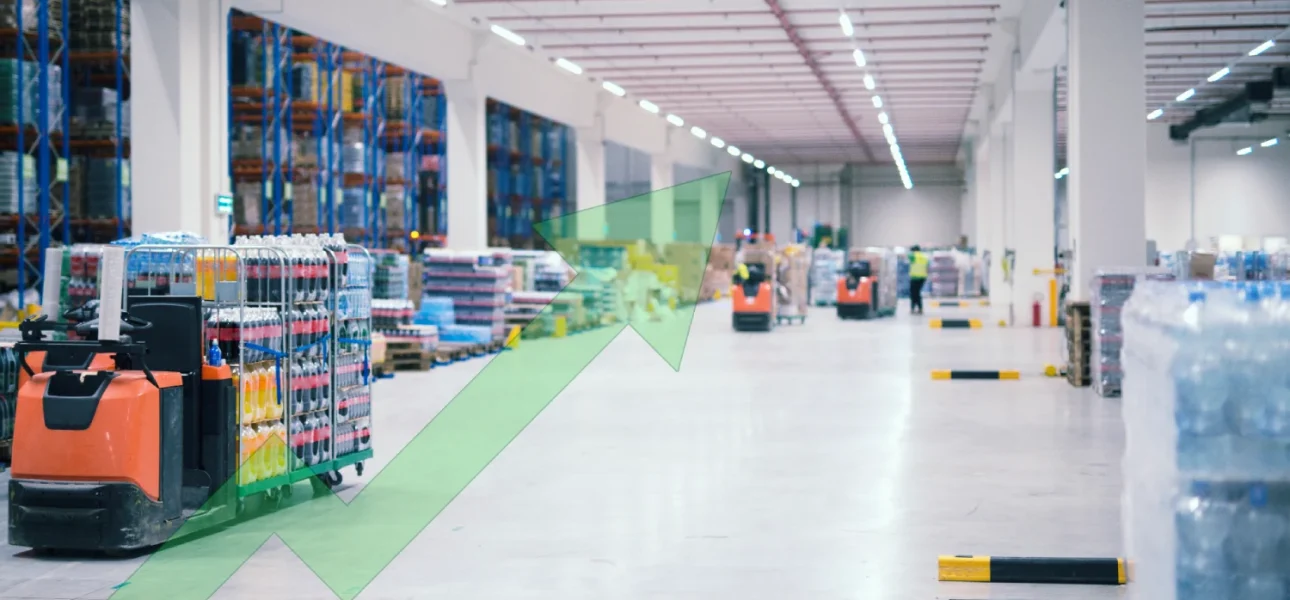In recent years, industrial real estate, particularly in the logistics sector has transformed from a traditionally passive asset class into a dynamic, high-performing cornerstone of corporate strategy. Once considered the utilitarian cousin of retail and office space, logistics facilities have now taken centre stage in boardroom conversations, balance sheet restructurings, and operational overhauls.
The catalyst? Corporate demand is not just more of it, but smarter, more specific, and more forward-thinking demand.
Corporates across sectors from retail and e-commerce to manufacturing and pharmaceuticals are rapidly evolving how they view, lease, and invest in logistics space. The need for real-time delivery, resilient supply chains, green credentials, and financial agility is driving an entirely new set of expectations from industrial real estate.
This shift is particularly pronounced in Europe, with the Netherlands playing a pivotal role as a logistics and distribution hub. As one of Europe’s most strategically located countries connected by deep ports, extensive road/rail networks, and close to major consumer markets: the Netherlands is ground zero for observing how corporate leasing behaviour is influencing acquisitions, developments, and investment strategies.
From innovative sale & leaseback projects and forward funding to sustainability-led developments and flexible leasing models, industrial real estate is evolving — with corporates moving beyond tenant roles to actively shape the future of logistics property.
Corporate Demand Trends Driving Change in Europe’s Logistics Leasing Market
1. Strategic Shift from Occupying to Optimizing
Corporates are no longer simply leasing warehouse space based on need. They are actively managing logistics assets as strategic levers. Site selection is driven by access to labour,transportation corridors, grid capacity, and increasingly, regulatory conditions. In the Netherlands, the proximity to ports like Rotterdam and cross-border access to Germany and Belgium make real estate logistics properties even more valuable when integrated with broader operational strategies
2. Sale & Leaseback Moves Gaining Momentum
With rising interest rates and inflationary pressure on capital expenditure, many corporates are turning to sale & leaseback arrangements to unlock capital tied up in owned logistics real estate. These deals allow them to raise funds while maintaining operational control of mission-critical facilities, often with long-term leases. In the Netherlands, this is particularly common among occupiers of large-scale logistics and light-industrial properties.
3. Pre-Leasing and Forward Funding Are Reducing Development Risk
In land-constrained markets like the Randstad or North Brabant, corporates are increasingly partnering with developers and investors through pre-leased, forward-funded developments. These arrangements reduce speculative risk and allow occupiers to secure bespoke, future-proof facilities often including automation infrastructure or ESG features before completion.
4.Sustainability Is Now a Lease Essential, Not a Bonus
Green logistics is no longer optional. From solar panels and smart metering to circular design and EV infrastructure, corporates are demanding more from their industrial leases when it comes to environmental performance. In a heavily regulated environment like the Netherlands with nitrogen reduction targets and climate reporting requirements, this demand is driving both retrofits and new sustainable developments.
5. Flexible Leasing Structures for Operational Agility
Corporate real estate teams are looking for flexibility, both in lease terms and in the types of space available. Shorter leases for overflow storage, expansion clauses, break options, and hybrid-use facilities (e.g. light assembly + logistics) are now part of the negotiation mix. This is especially true in urban edge areas where last-mile delivery pressures are highest.
6. Portfolio Rationalisation and Cross-Border Planning
Rather than managing logistics real estate on a country-by-country basis, multinational corporates are consolidating into fewer, larger, strategically located hubs. The Netherlands, with its high logistics density, is often included in pan-European real estate strategies that balance cost, coverage, and compliance.
What Everyone’s Asking: 6 Key Questions in Today’s Leasing Landscape
Why are corporates favouring sale & leaseback deals now more than ever?
Because it’s a smart way to free up capital for business growth, without relocating or disrupting operations. The strength of the European logistics market allows them to secure favourable pricing and long lease terms.
Are long-term leases still the standard, or is flexibility winning?
Both are in play. Long-term leases (10–20 years) are still preferred for large logistics facilities, especially in SLB deals. However, flexibility such as early exit clauses or modular lease models is becoming increasingly attractive in urban or volatile markets.
How do sustainability features affect leasing terms and property values?
ESG-compliant buildings often command higher rents and lower yields, but they also reduce long-term regulatory and operational risk. Tenants are willing to pay for compliance, and investors are rewarding green features with higher valuations.
What’s driving corporates to secondary markets in Europe?
Land scarcity, rising rents in prime areas, and infrastructure congestion are pushing occupiers to consider smaller, more affordable markets that still offer strong transport links. In the Netherlands, regions like Venlo and Moerdijk are emerging alternatives.
Are we seeing a shift toward multi-storey or vertical logistics in Europe?
Yes, particularly in dense urban areas where land prices are high. The Netherlands has seen early experiments with stacked warehousing in Amsterdam and Rotterdam, mirroring trends seen in Asia.
What types of leasing models are being explored beyond the traditional full-service lease?
From shared-use logistics hubs to on-demand warehousing platforms and core-and-flex models, corporates are exploring a range of alternatives that offer cost efficiency and adaptability.
Looking Ahead: What This Means for Industrial Leasing in Europe
The logistics real estate market is being reshaped by a corporate sector that demands more than just physical space. Occupiers are seeking integrated real estate strategies that align with supply chain resilience, digital transformation, and ESG goals.
In response, leasing models are evolving and becoming more flexible, more capital efficient, and more integrated with financial strategy. Investors and developers, in turn, are adapting to these demands by offering new forms of collaboration, such as forward funding, SLBs, and custom-built facilities.
With the Netherlands as a key node in this ecosystem, trends emerging here often ripple outward across Europe.
Navigating Industrial Leasing with Strategic Partners
In this fast-changing landscape, we are playing a role by helping corporates and capital partners structure deals that balance long-term value with short-term agility. With a focus on logistics real estate and a footprint in the Netherlands and across Europe. RENEW Real Estate (RRE) supports sale & leaseback transactions, forward acquisitions, and development partnerships that reflect the evolving priorities of the market.
Rather than taking a one-size-fits-all approach, RRE works with stakeholders to align real estate structures with operational needs, financial objectives, and sustainability goals. As corporate demand continues to reshape industrial leasing, such partnerships are likely to become even more integral to how logistics property is financed, occupied, and delivered in the future.

